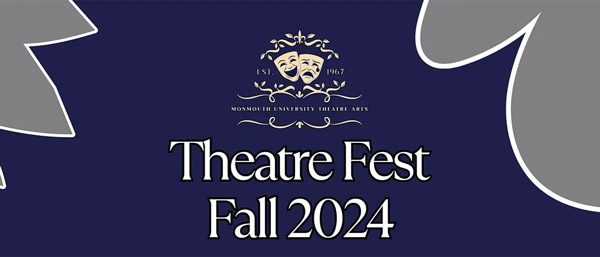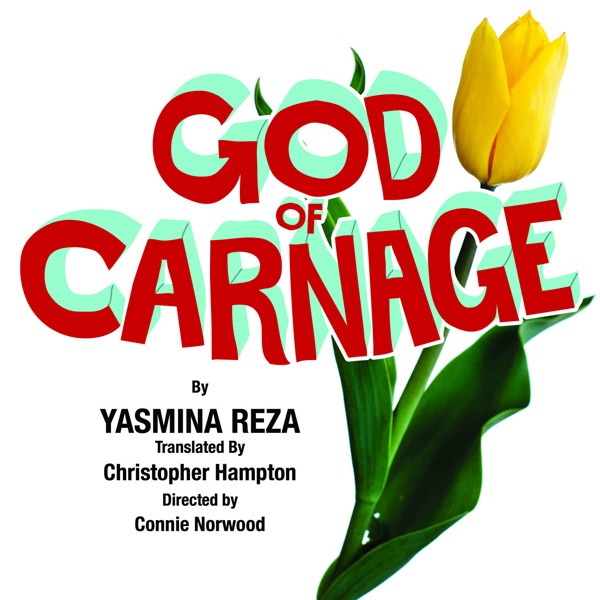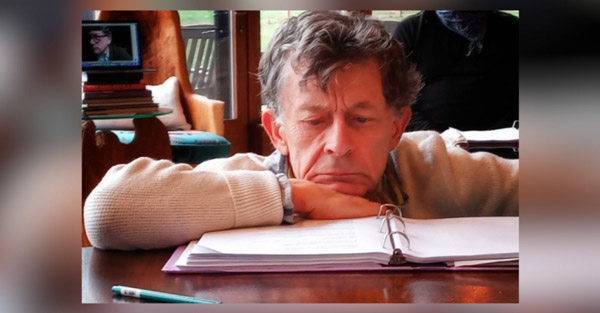By Gary Wien, JerseyArts.com
originally published: 11/09/2016
 “I think it is important for audiences, like theatres, to occasionally leave their comfort zones,” explained Carl Wallnau, Chair, Communication and Fine Arts / Producing Director for Centenary Stage Company. “Without exposing audiences to a variety of artists with diverse voices, you run the risk of presenting a bland, one note season of the tried and true, while never realizing that there exists a world of possibilities outside your usual circle of experience.”
“I think it is important for audiences, like theatres, to occasionally leave their comfort zones,” explained Carl Wallnau, Chair, Communication and Fine Arts / Producing Director for Centenary Stage Company. “Without exposing audiences to a variety of artists with diverse voices, you run the risk of presenting a bland, one note season of the tried and true, while never realizing that there exists a world of possibilities outside your usual circle of experience.”
Centenary leaves its comfort zone each year with its Fringe Festival. Launched in 2011 with a mission to explore specific aspects of theatre; the spoken word; physical theatre; and theatre of sight and sound. This year’s festival began at the end of October with Kick by Joanna Rush, and continues November 10-13 when Hard Travelin’ With Woody by Randy Noojin is presented in the Kutz Theater.
Hard Travelin’ with Woody is a one-man multimedia play featuring the music and artwork of Woody Guthrie. Performed by Noojin, the audience hops on a box car for a ride through the Dustbowl with Woody Guthrie. Through Woody’s words, songs, and artwork, America’s iconic folksinger and champion of the little guy plays for a union meeting of striking mine workers who are on the verge of yielding to vigilante violence.
 Noojin was inspired to create the show after seeing Guthrie’s daughter, Nora, perform during a video of a tribute concert around the time the Occupy Wall Street movement was taking place. The two events gave him the idea that what Woody had to say was pertinent to today’s America and might be of interest to people.
Noojin was inspired to create the show after seeing Guthrie’s daughter, Nora, perform during a video of a tribute concert around the time the Occupy Wall Street movement was taking place. The two events gave him the idea that what Woody had to say was pertinent to today’s America and might be of interest to people.
“I realized it didn’t have to be a show about history,” said Noojin. “It could be about what is still happening in the United States.”
The show made its debut five years ago at FringeNYC, receiving good reviews despite being just a guy with a guitar and harmonica on stage. Noojin decided that the show needed to add some visual elements to keep the show growing. As luck would have it, Guthrie’s own artwork was the perfect complement. Woody always thought artwork was his calling as as Noojin learned more about this side of him, he rewrote the play to make art a key component.
“In the show, he makes a discovery that sign painting isn’t going to do it for him; that there’s another art form in him,” explained Noojin.
The artwork helped the show take on a new direction and focus. In Guthrie’s autobiographical novel “Bound for Glory,” he drew pictures of key moments of his life. These pictures are combined with video to provide layers of perspective. There is actual news reel footage of events found in Guthrie’s songs such as the “Bum’s Blockade” at the California line, which was the inspiration behind Woody’s classic “Do-Re-Mi” song; video of trains and dams being built, along with images of working people in steel mills, coal mines, and cotton fields — all of which bridge the gap between Woody’s songs and the time frame in which they were written.
“It’s just magical that we get to see all of these things in terms of dialogue and my relationship with the audience,” continued Noojin. “It’s just like a union meeting. Once the context of a union meeting of striking mine workers was decided on, I began to find text that would bridge the songs with context, and follow Woody’s journey toward discovering his life’s work, his socio-political awakening, and his bottomless hope.”
Above: promo video for Hard Travelin’
The entire play seemed to magically come together for Noojin. He found the ideal starting point for the opening in the song, “Oklahoma Hills” which begins with the words “Many months have come and gone since I wandered from my home in those Oklahoma Hills where I was born.” He also found the perfect song to kick off the second act with the call for action of “Bound for Glory.” Meanwhile, Noonjin always knew the ending would be “This Land Is Your Land.”
“He had a song for the major deciding moments of his life,” said Noojin. “And so the songs sort of told me how to structure the show.”
Like Woody, Noonjin is a man of many talents. He’s a playwright, an actor, and a musician. He was never much of a Guthrie fan growing up, but was a huge fan of Bob Dylan and knew Woody was Dylan’s hero. As Noojin got older, he found himself becoming more political. He related to the words and stories of Guthrie, finding them very much like Steinbeck — words that were very stage-worthy and should be spoken rather than simply read.
“I only chose things that Woody said that I can get 100 percent behind,” explained Noojin. “There’s really not much imagination required for me to espouse these thoughts.”
 He also makes sure to show the sides of Guthrie that have been somewhat glossed over by history, including the most critical verses of “This Land Is Your Land” that are rarely sung. When you hear the song performed in the play, you’ll notice the familiar melody but might not know the words sung.
He also makes sure to show the sides of Guthrie that have been somewhat glossed over by history, including the most critical verses of “This Land Is Your Land” that are rarely sung. When you hear the song performed in the play, you’ll notice the familiar melody but might not know the words sung.
In the shadow of the steeple I saw my people,
By the relief office I seen my people;
As they stood there hungry, I stood there asking
Is this land made for you and me?
“Woody told his son Arlo to make sure those verses get into the song,” said Noojin. “And Pete Seeger helped Arlo make sure that happened. When they sang the song for the Obama inauguration, Bruce Springsteen and Seeger made sure to sing the verses that question America because ‘This Land Is Your Land’ was written as a response to ‘God Bless America’ – the Irving Berlin song. Woody heard that song and didn’t think that God has blessed the America that he saw. So ‘This Land Is Your Land’ was an alternate reaction to the song. When when you take out the critical verses it becomes just a patriotic song, which was not its intention.”
Centenary’s Fringe Festival concludes November 17-20 with The Other Mozart — the true and untold story of Nannerl Mozart, the sister of Amadeus (prodigy, keyboard virtuoso, and composer) who performed throughout Europe with her brother, to equal acclaim, but her work and her story faded away, lost to history.
Created by Sylvia Milo and performed by Samantha Hoefer, the monodrama is set in a stunning 18-foot dress and based on facts, stories, and lines pulled directly from the Mozart family’s humorous and heartbreaking letters.
“Centenary Stage is dedicated to presenting diverse work as well as exploring different disciplines and theatrical experiences,” added Wallnau. “There are numerous performing artists and theatre companies pushing the performing arts envelope and we felt that we could both support our mission and give our audience a different experience by dedicating part of our season to a Fringe Festival, highlighting those companies and performers one might see at festival like the New York or Edinburgh Fringe.”
For more information, visit www.centenarystageco.org.
About the author: Gary Wien is a music journalist from Belmar, NJ. A three-time winner of Asbury Music’s Music Journalist of The Year, his writing and photographs have been seen in publications like Upstage Magazine, Backstreets Magazine, Gannett Newspapers, and Princeton Magazine. He is the also the author of two books: Beyond The Palace (about the history of rock music in Asbury Park) and Are You Listening? (his picks for the Top 100 Albums of 2001-2010 by New Jersey Artists) and is the publisher of New Jersey Stage magazine.
Content provided by
Discover Jersey Arts, a project of the ArtPride New Jersey Foundation and New Jersey State Council on the Arts.
FEATURED EVENTS
Narrow results by date, categories, or region of New Jersey.

Theatre Fest Fall 2024 – Spark Sessions: A Night of Original Works by MU Players
Thursday, November 21, 2024 @ 8:00pm
Monmouth University - Lauren K. Woods Theatre
370 Cedar Avenue, West Long Branch, NJ 07764
category: theatre
View event page for full information

Elf The Musical
Thursday, November 21, 2024 @ 7:00pm
Count Basie Center for the Arts
99 Monmouth Street, Red Bank, NJ 07701
category: theatre
View event page for full information

Fiddler On The Roof
Thursday, November 21, 2024 @ 11:00am
Axelrod Performing Arts Center
100 Grant Avenue, Deal Park, NJ 07723
category: theatre
View event page for full information
More events
Event Listings are available for $10 and included with our banner ad packages
EVENT PREVIEWS

Livingston Theatre Company presents "Something Rotten!"
(PISCATAWAY, NJ) -- The Livingston Theatre Company presents Something Rotten! from November 21-24, 2024. Come see two brothers set out to write the world's first musical in this hilarious mash-up of sixteenth-century Shakespeare and twenty-first-century Broadway.
UPCOMING EVENTS

South Camden Theatre Company presents "God of Carnage"
(CAMDEN, NJ) -- South Camden Theatre Company presents God of Carnage by Yasmina Reza across three weekends in November 2024. Using a translation by Christopher Hampton, the production of the 2009 Tony Award winning play is directed by Connie Norwood.
 “I think it is important for audiences, like theatres, to occasionally leave their comfort zones,” explained Carl Wallnau, Chair, Communication and Fine Arts / Producing Director for Centenary Stage Company. “Without exposing audiences to a variety of artists with diverse voices, you run the risk of presenting a bland, one note season of the tried and true, while never realizing that there exists a world of possibilities outside your usual circle of experience.”
“I think it is important for audiences, like theatres, to occasionally leave their comfort zones,” explained Carl Wallnau, Chair, Communication and Fine Arts / Producing Director for Centenary Stage Company. “Without exposing audiences to a variety of artists with diverse voices, you run the risk of presenting a bland, one note season of the tried and true, while never realizing that there exists a world of possibilities outside your usual circle of experience.” Noojin was inspired to create the show after seeing Guthrie’s daughter, Nora, perform during a video of a tribute concert around the time the Occupy Wall Street movement was taking place. The two events gave him the idea that what Woody had to say was pertinent to today’s America and might be of interest to people.
Noojin was inspired to create the show after seeing Guthrie’s daughter, Nora, perform during a video of a tribute concert around the time the Occupy Wall Street movement was taking place. The two events gave him the idea that what Woody had to say was pertinent to today’s America and might be of interest to people.

 He also makes sure to show the sides of Guthrie that have been somewhat glossed over by history, including the most critical verses of “This Land Is Your Land” that are rarely sung. When you hear the song performed in the play, you’ll notice the familiar melody but might not know the words sung.
He also makes sure to show the sides of Guthrie that have been somewhat glossed over by history, including the most critical verses of “This Land Is Your Land” that are rarely sung. When you hear the song performed in the play, you’ll notice the familiar melody but might not know the words sung.






